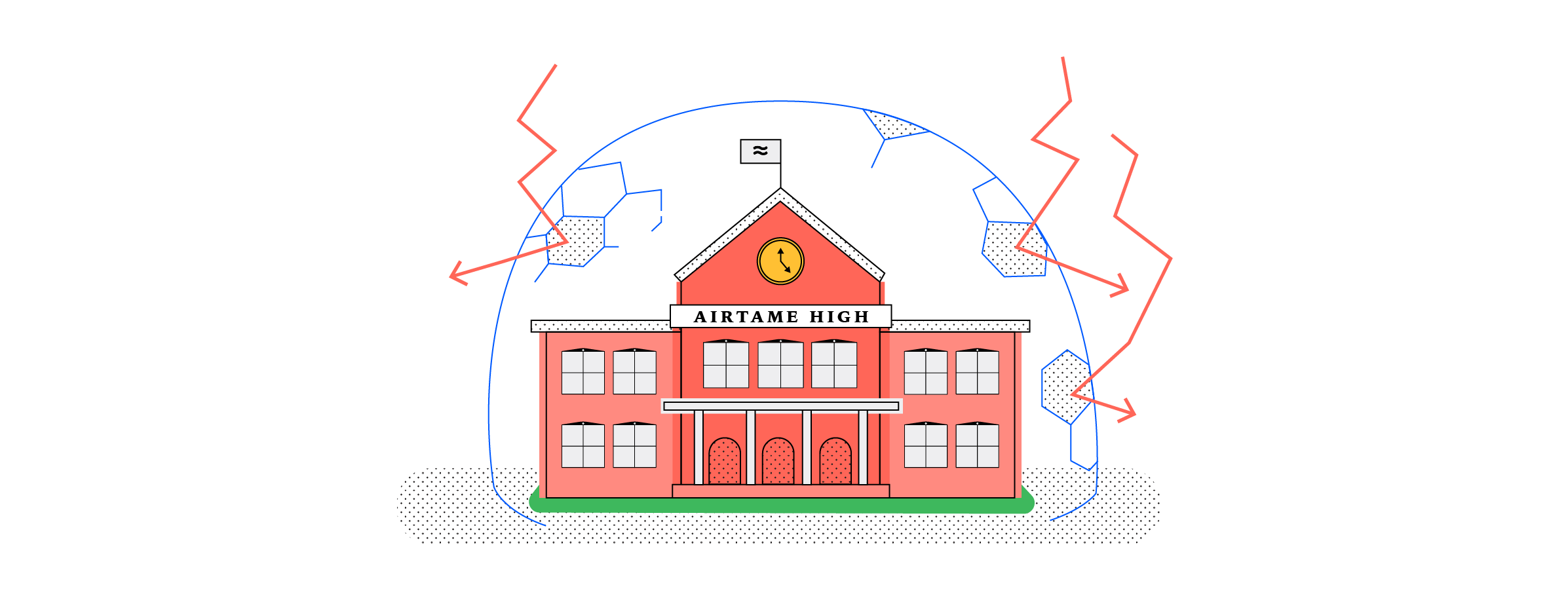A web proxy can help keep your network safe from external threats. Here’s what you need to know.

A web proxy can help keep your network safe from external threats. Here’s what you need to know.
Let’s talk about the least sexy but most vital part of your workplace: network security. At a school or large office, there is usually an intricate system of security measures keeping private data safe.
Many are familiar with firewalls when talking about network security, perhaps because of the vivid visual it calls to mind. The same unfortunately can’t be said for an integral part of a secure network: the web proxy.
Unlike a firewall, which is used purely for blocking threats, a web proxy acts more as a middleman between a device and the internet. This device could be a computer or even an Airtame. Luckily for Airtame, we now support a web proxy setup, so we can stay on the proxy’s good side.
In this article, we dig a little deeper to uncover why you need to know what a web proxy can do for your network.
As the need for internet access at the workplace grows, web proxies come from a need to secure an organization’s internal network from external threats. Broadly speaking, a web proxy, also referred to as a proxy or proxy server, is a way to filter the connection between your computer and the internet.
Let’s break it down.
Say you want to check your Facebook profile to see how many likes that picture of your dog received. You open up a web browser and type in “www.facebook.com”.
Without a web proxy, your computer would simply connect directly to the internet to access the website and display it for you.
With a proxy, your computer will connect to a separate server, the proxy, that sits between the computer and the internet. The web proxy acts like airport security and is in charge of screening what websites are allowed access or not.
What is and is not allowed is determined by your organization’s IT policy. If social media sites are restricted, then, unfortunately, that means you’ll have to wait until you get home to check your Facebook.

There are two overall reasons why larger organizations use web proxies in their network security setup: to protect their private data and to improve the performance of their internal network.
The top reason why a web proxy is needed on a network is that it protects a company’s data assets by limiting websites that potentially contain malicious code.
And not just data assets, but physical assets too when you consider the possible costs of replacing an organization’s hardware when a virus renders it unusable.
Enterprise companies might have confidential proprietary information, their employees’ private data, as well as their customers’ personal information sitting on their local network. With all this valuable data to protect, it doesn’t seem so excessive to monitor internet usage.

Depending on the type of proxy you use and how it is set up, it is possible that using a proxy can improve performance by caching web pages.
For example, let’s say you recently visited airtame.com. The proxy can save a temporary copy of the webpage which it stores locally so that when your colleague visits airtame.com later that day, the proxy can serve up that copy instead of having to retrieve the original from the internet.
This is most useful for frequently visited websites, for instance, if you often refer to your company’s website. It’s saving you the loading time of the page every time you visit.
Every organization’s network is different and can have different needs. Luckily, there are several ways to incorporate a web proxy, or even a set of web proxies, into any network setup, which makes it a flexible solution.
Not every company makes use of web proxies. The majority of web proxy users are enterprise-level companies or educational institutions that need a manageable way of monitoring the large volume of internet users on their network.
Enterprise companies and educational institutions use proxies to keep their network safe, but they go about it in slightly different ways.
For larger corporations, corporate espionage is not just the stuff of James Bond films. It is a real threat that makes it necessary for companies to monitor the traffic coming in and out of their network. These companies use proxies to filter everything – websites, emails, and any applications that access internet.
Of course, sometimes a web proxy also protects us from ourselves. Checking social media may seem harmless, but let’s admit that it is a productivity threat. In this case, companies use proxies to set time limits for social media use during business hours.
For schools and universities, it is important to use a web proxy that blocks access to adult content. In this case, purchasing a quality service that keeps an up-to-date database of known adult content sites is key.
In certain instances, it is necessary to block access to radically political websites or sites that promote hate speech, both to ensure a safe environment for students, as well as make sure students cite quality source material in their research.
Another reason schools and universities invest in a good database is to monitor sites known to carry malicious code. Even if a malicious website attempts to hide behind a normal website and redirect you to a site running malware, the web proxy flags this as abnormal behavior and blocks access.

Our latest product update introduces web proxy support. This means that, if your organization uses a web proxy setup, you can now configure Airtame to access the proxy and thereby reach the internet.
[quote: “Web proxy support is a big step forward for Airtame and our enterprise customers, where security and wireless screen sharing go hand-in-hand.” – Simon Hangaard, Head of Product Management at Airtame]
Airtame requires internet access in order to receive important product updates and to make use of certain tools. For example, you can register your Airtame devices to Airtame Cloud, our web-based device management tool that, among other things, lets you remotely monitor devices.
Another useful Airtame feature that requires internet is our Homescreen, which lets you display web-based dashboards or even slideshows.